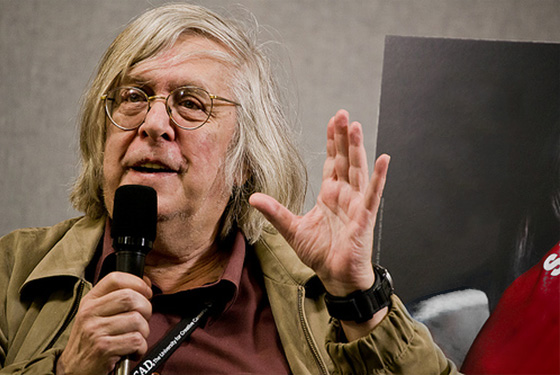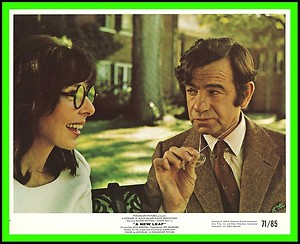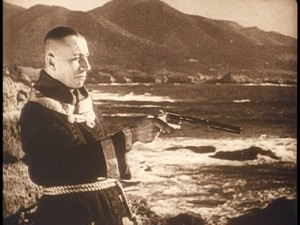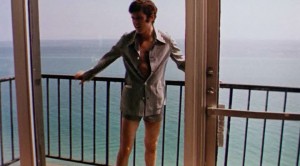From the Chicago Reader (October 1, 1991). — J.R.
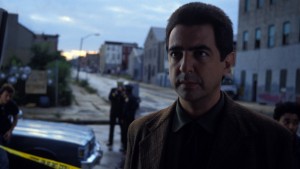
David Mamet shares with Ernest Hemingway a mannerist style of macho dialogue made up of short sentences and repeated phrases that lends itself to self-parody as well as parody. In this second step down the ladder from the promise of his first picture (House of Games), he seems to be approximating Hemingway in his mawkish For Whom the Bell Tolls period. Joe Mantegna plays an alienated cop who implausibly discovers his Jewish roots through a couple of cases he’s assigned to, and finds himself manipulated as much by Jewish terrorists as by his superiors on the police force. Despite the occasional snap and crackle of Mamet-talk at its most surreal (“They couldn’t find Joe Louis in a bowl of rice”), the movie is just plain silly when it isn’t merely unbelievable (the usually astute Mantegna, alas, never once springs to life), with a good many unsuspenseful suspense sequences and apolitical political ruminations. W.H. Macy, Natalija Nogulich, Ving Rhames, Rebecca Pidgeon, and Vincent Guastaferro are among the costars (1991). (JR) Read more
From the Los Angeles Times’ Calendar, June 14, 1987. For readers who might wonder how I could have ever gotten such an assignment, I should point out that in this period, the Los Angeles Times was running anti-Ishtar articles virtually every day over several weeks, so I assume that my contrary position must have had some interest for them strictly as a novelty. This piece is reprinted in my most recent collection, Cinematic Encounters 2: Portraits and Polemics (2019). — J.R.
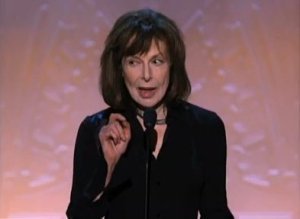
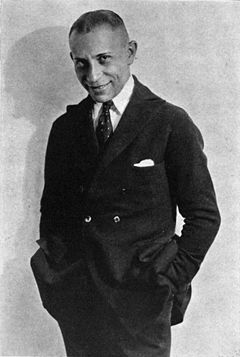
In all of Elaine May’s films, one encounters a will to power, a witty genius for subversion and caricature, and a dark, corrosive vision that recalls the example of Eric von Stroheim. The legendary Austrian-born director who started out, like May, as an aggressive actor (“The Man You Love to Hate”), Stroheim the film maker was known throughoutthe ’20s for his intransigence and extravagance — what one studio head termed his “footage fetish’.
The thematic and stylistic parallels between May and Stroheim are equally striking. Broadly speaking, “A New Leaf” is her “Blind Husbands” — a bold first film about ferocious, cynical flirtation, with the writer-director in the lead part. The Miami of “The Heartbreak Kid matches the Monte Carlo of “Foolish Wives”; the squalor and hysteria of “Mikey and Nicky” hark back to “Greed.” Read more
From the Chicago Reader (October 27, 2000). — J.R.

Alain Resnais’ first feature in English (1977, 110 min.) focuses on the imagination, dreams, and memories of an aging British novelist (John Gielgud) over one night as he mentally composes and recomposes his last book, using members of his immediate family — Dirk Bogarde, Ellen Burstyn, David Warner, and Elaine Stritch — as his models. Although David Mercer’s witty, aphoristic script can be British to a fault, the film’s rich mental landscape is a good deal more universal, with everything from H.P. Lovecraft’s werewolves to a painted seaside backdrop providing the essential textures. Like all of Resnais’ best work, this is shot through with purposeful and lyrical enigmas, but the family profile that emerges is warm and penetrating, recalling the haunted Tyrones in Long Day’s Journey Into Night rather than the pieces of an abstract puzzle. The superb performances and Miklos Rozsa’s sumptuous Hollywood-style score give the film’s conceit a moving monumentality and depth, and Resnais’ insights into the fiction-making process are mesmerizing and beautiful. This is showing in a 16-millimeter print, but later in the evening the Film Center will present 35-millimeter prints of Hiroshima, mon amour (1959) and Muriel (1963). Read more
